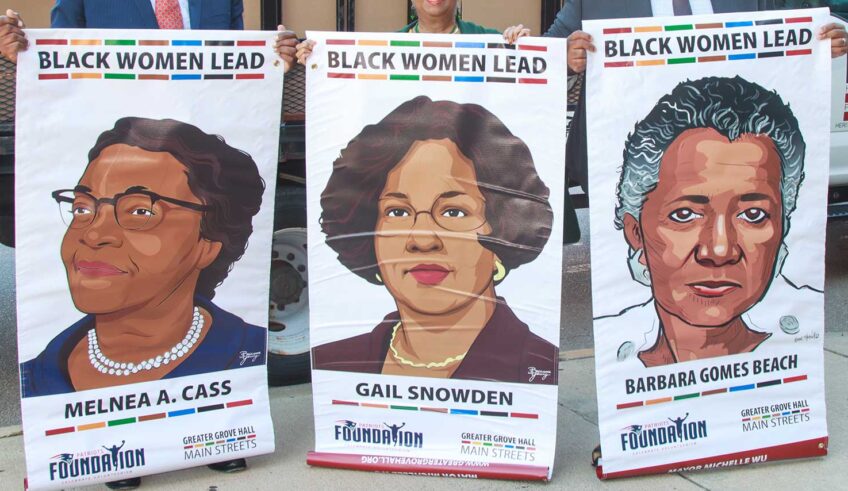Over the next few decades, Boston will increasingly see the impacts of the climate crisis. People living in Roxbury will deal with excessive heat. And residents of East Boston will face massive amounts of flooding, which will endanger lives as well as livelihoods.
This may seem like old news — after all, we’ve seen nor’easters flood the Seaport and downtown Boston and ravage our coastline. We know that New England’s summers are getting hotter. But a recent report from Conservation Law Foundation and Communities Responding to Extreme Weather shows that the negative impacts of the climate crisis are not going to be evenly distributed across Boston’s neighborhoods. Black and brown communities are more likely to bear the brunt of these impacts. These communities must be given the tools to survive it.
Our analysis identified areas in Boston that are most vulnerable to climate change based on three components: social vulnerability, built environment factors and climate hazards, including heat and flooding. We examined climate-sensitive census tracts for both extreme heat and flooding and found that a number of neighborhoods will see climate impacts, including Fenway, South Boston, Dorchester, Chinatown, Jamaica Plain, the North End and the South End. But Roxbury and East Boston are especially vulnerable to heat and flooding, respectively.
The social vulnerability factor is important here, because our study is focused on finding ways to make the people who live in Boston — not just the buildings and open space — more resilient to climate change. Social vulnerability accounts for the decades of structural inequities that disproportionately harm low-income people and people of color. It’s not that communities with the highest rates of poverty and the highest vulnerability to climate change lack social infrastructure — it’s that community institutions in these places need more resources to prepare for climate emergencies.
The good news is that we also offer a solution, in the form of creating “climate resilience hubs.” Climate resilience hubs are community institutions — including local businesses, nonprofits, community centers, libraries, places of worship and schools — that have committed to aiding the community before, during and after extreme weather events like major storms and dangerous heat waves. This assistance can be in the form of educational events and information, or material items and services, like phone charging during a power outage. The idea is to build the kind of social infrastructure that will help people survive the climate crisis.
As the COVID-19 pandemic has shown, acknowledging the vulnerabilities that Black and brown communities face is the first step to prioritizing their needs. This is also true of climate change.
In the study, we make several recommendations to help develop the kind of infrastructure that prioritizes the needs of people, especially communities of color. Among those recommendations:
• Establish climate resilience hubs in high-priority areas. The city should prioritize establishing and funding resilience hubs, particularly in East Boston and Roxbury, where residents will face disproportionate impacts.
• Integrate climate resilience hubs into city plans and initiatives. The city should also integrate resilience hubs into planning and policy documents, including climate adaptation, mitigation and emergency response plans. In particular, the city should consider the role of climate resilience hubs in Climate Ready Boston neighborhood plans.
• Prioritize community institutions in the face of budget cuts. Many of the institutions that offer near-term opportunities to establish resilience hubs are publicly owned or operated facilities like schools, libraries and community centers. In the face of potentially deep budget cuts in the aftermath of COVID-19, the city should invest in existing neighborhood institutions that have the ability to provide critical information and services during extreme weather and other catastrophes.
• Earmark funding to support climate resilience hubs and social resilience. The city should earmark capital funds to support existing and new neighborhood institutions interested in being climate resilience hubs. In addition, a grant program should provide funds for climate resilience hubs that are not owned or operated by the city.
As a city, we have long acknowledged the reality of the climate crisis. And as a community, we have a long tradition of using our institutions to make lives better for those facing oppression and crises. With climate change upon us, we must act now to make sure our most vulnerable communities have the resiliency tools they need.
Carol Gregory is vice president of marketing and communications at Conservation Law Foundation. Saritha Ramakrishna is a climate justice and community resilience policy analyst at Conservation Law Foundation.






